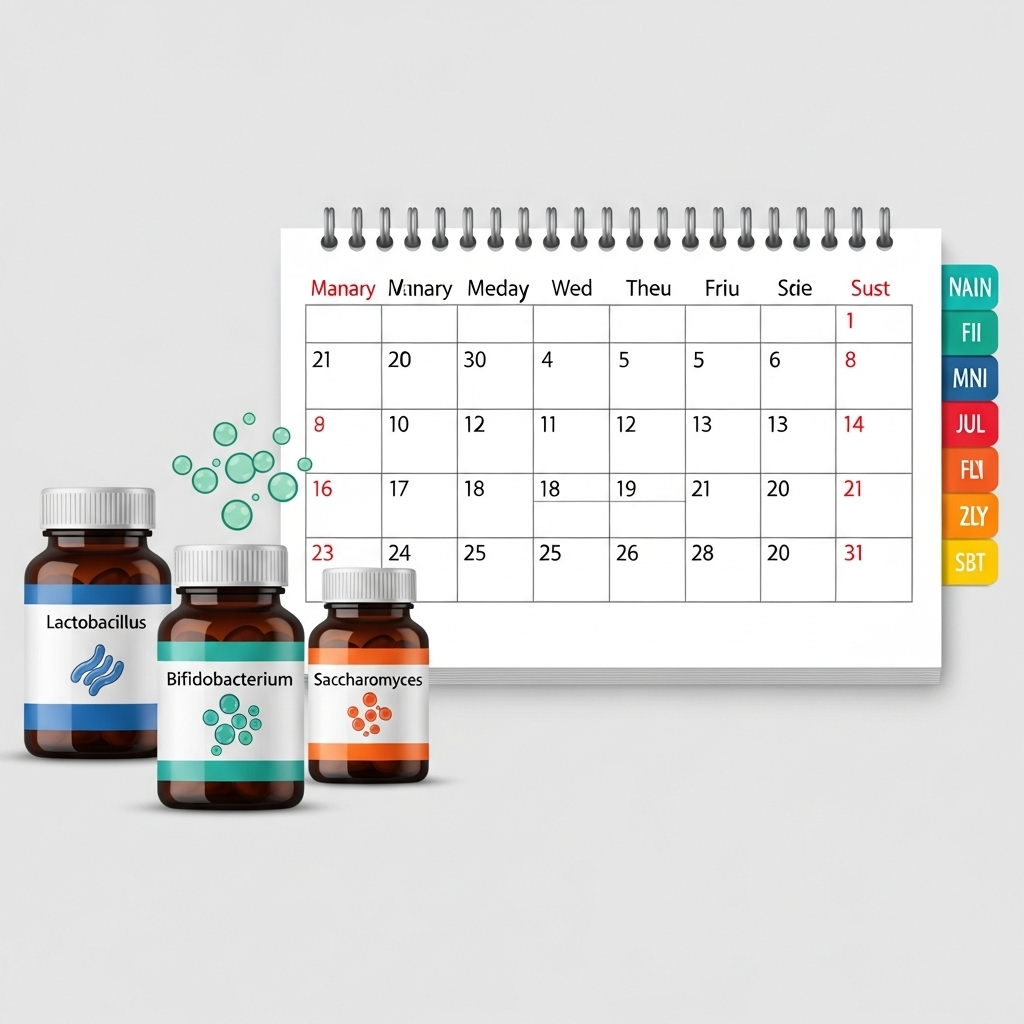Should You Rotate Pet Probiotic Strains? How Often?

Many pet owners wonder whether rotating probiotic strains for dogs and cats helps gut health or if sticking with one product is better. The short answer: sometimes rotation can be helpful, but it depends on your pet’s health, the strains involved, and how you implement changes. This article explains why strain diversity matters, when rotation may be helpful, practical timing guidance (including the phrase rotate probiotic strains for pets how often), and how to do it safely.
Why probiotic strain diversity matters
Probiotics are living microorganisms—different strains have different behaviors and potential effects. Some key points:
- Strain-specific actions: Individual strains of Lactobacillus, Bifidobacterium, Enterococcus, Bacillus, and Saccharomyces (a yeast) can differ in how they survive the stomach, adhere to the gut lining, or interact with the immune system.
- Targeted benefits: Certain strains are studied for specific issues (diarrhea, antibiotic-associated upset, stool quality, or immune support). Rotating may expose a pet to a broader range of potential benefits.
- Microbial ecology: Pets have unique gut microbiomes. A blend of strains may support a balanced ecosystem better than a single strain for some animals.
When rotating probiotic strains may help
Rotate probiotic strains for pets how often? Consider rotation if any of the following apply:
- Your pet has non-specific chronic digestive issues and one product hasn’t improved symptoms after a reasonable trial period.
- You want exposure to different probiotic species and strains (for example, switching between a multi-strain product and one that contains Saccharomyces boulardii for occasional diarrhea).
- Your veterinarian recommends changing products based on lab tests, clinical response, or evolving health needs.
When not to rotate or to be cautious
Avoid frequent, unnecessary changes if your pet is doing well on a specific probiotic. Rapid switching can make it hard to judge effectiveness and may temporarily unsettle digestion. Consult your veterinarian before changing strains for pets with serious or immune-compromising conditions.
How often should you rotate probiotic strains?
There’s no universal timing backed by one-size-fits-all evidence, but practical guidance for most companion animals:
- Minimum trial period: Give a new probiotic at least 4 to 6 weeks to assess effect. Many changes in stool quality and digestion take several weeks to become clear.
- Common rotation interval: 6 to 12 weeks is a reasonable interval for rotating strains in healthy pets or when trialing different products.
- Long-term maintenance: If your pet benefits from a specific formula, continued use is appropriate rather than rotating for the sake of variety.
- Short-term or targeted use: Some probiotics (e.g., Saccharomyces boulardii) are used short-term for episodes of diarrhea; these may be used only for days to a couple of weeks under veterinary guidance.
Practical rule of thumb
If you’re experimenting, try one product for 6–12 weeks, observe clinical signs (stool consistency, appetite, activity, skin/coat), then switch if needed. Avoid switching more often than every 4 weeks unless advised by a veterinarian.
Timing around antibiotics and other medications
Antibiotics can disrupt gut bacteria. General, cautious recommendations:
- Concurrent use: Many veterinarians recommend using probiotics during antibiotic therapy to help reduce antibiotic-associated diarrhea. If doing both, space doses 2–3 hours apart so the antibiotic has less direct effect on the probiotic organisms.
- After antibiotics: Continue probiotics for at least 1–4 weeks after finishing a course to support microbiome recovery; your veterinarian may recommend longer in some cases.
- Immunocompromised pets: If your pet has a severely compromised immune system or central venous access, consult your veterinarian before using live probiotics.
How to rotate safely and effectively
- Talk to your veterinarian before starting or rotating probiotics—especially for sick, elderly, young, or immunocompromised animals.
- Record baseline symptoms (stool score, frequency, appetite, behavior) before starting a new product so you can compare.
- Stick with one product for at least 4–6 weeks unless side effects occur. Preferably 6–12 weeks to judge effects reliably.
- Introduce new strains gradually if your pet is sensitive: start with a lower dose for a few days and then increase to the recommended amount.
- Keep forms consistent where possible (chew, powder, capsule) to help with dosing accuracy and compliance.
- Prioritize quality: choose veterinary-formulated or reputable human-grade supplements with clear strain labeling and colony-forming unit (CFU) counts at time of manufacture or guaranteed through shelf life.
Pros and Cons
| Pros | Cons |
|---|---|
|
|
Choosing a high-quality probiotic
Look for products that list specific strains (not just species), provide CFU counts, include storage instructions, and have manufacturing quality assurance. Veterinary-formulated products or those with third-party testing are preferred.
FAQ
Do I have to rotate probiotics for my dog or cat?
No. If your pet is doing well on a specific probiotic and your veterinarian supports continued use, there’s no requirement to rotate. Rotation is an option when seeking additional benefits or if a product is not helping.
How quickly will I see results after switching strains?
Some pets show changes in stool consistency within days, but most meaningful changes take 4–8 weeks. Use a minimum 4–6 week trial to evaluate a new product.
Can I give multiple probiotic products at once?
Combining products can increase strain diversity, but avoid overlapping products without guidance; excessive dosing or incompatible strains might be unnecessary. Ask your veterinarian to design a regimen if you plan to combine supplements.
Are probiotics safe for all pets?
Most healthy dogs and cats tolerate probiotics well. Pets with severe illness, immune suppression, or central lines should be evaluated by a veterinarian before using live microbial supplements.
Key Takeaways
- Rotate probiotic strains for pets how often? There’s no single rule—6–12 weeks is a reasonable rotation/trial window for most cases.
- Give each product at least 4–6 weeks (preferably 6–12) to judge effectiveness.
- Don’t switch frequently—rapid changes can obscure results and upset digestion.
- Use probiotics during and after antibiotics with appropriate timing (space doses) and vet guidance.
- Prioritize veterinary advice and high-quality, strain-specific products.
- If your pet is doing well on a product, continued use is often appropriate rather than rotating unnecessarily.
Always consult your veterinarian before starting, stopping, or rotating probiotics—especially for pets with health issues or those on medications.
Disclaimer: This information is educational and not a substitute for veterinary medical advice. Individual pets have unique health needs; consult a licensed veterinarian to determine the best probiotic strategy for your pet.

Leave a Reply